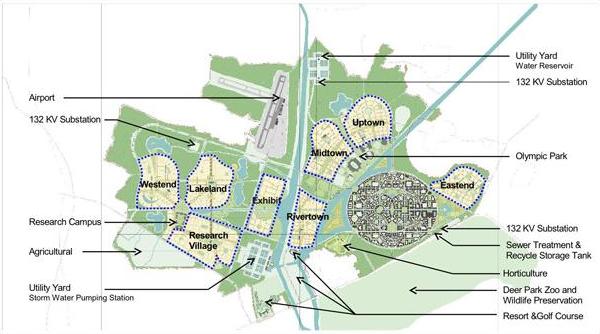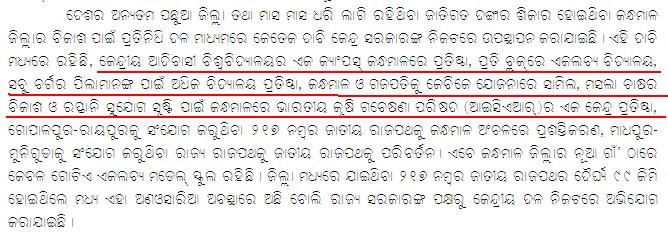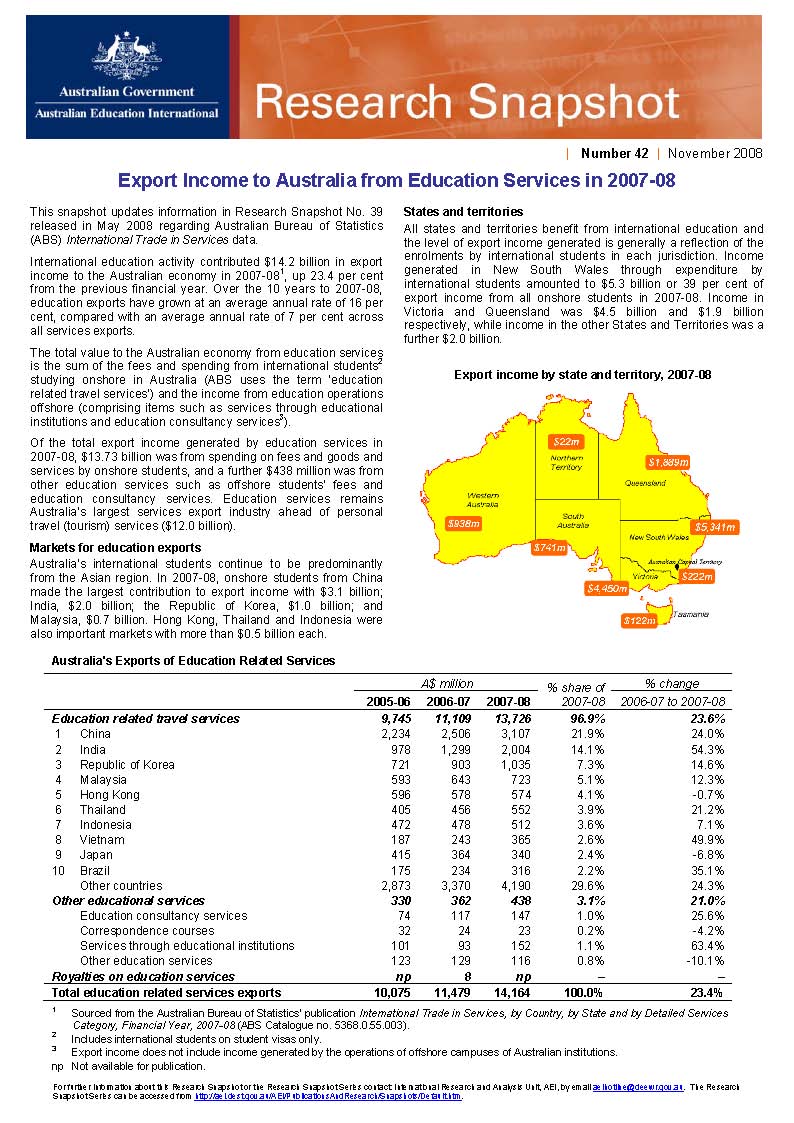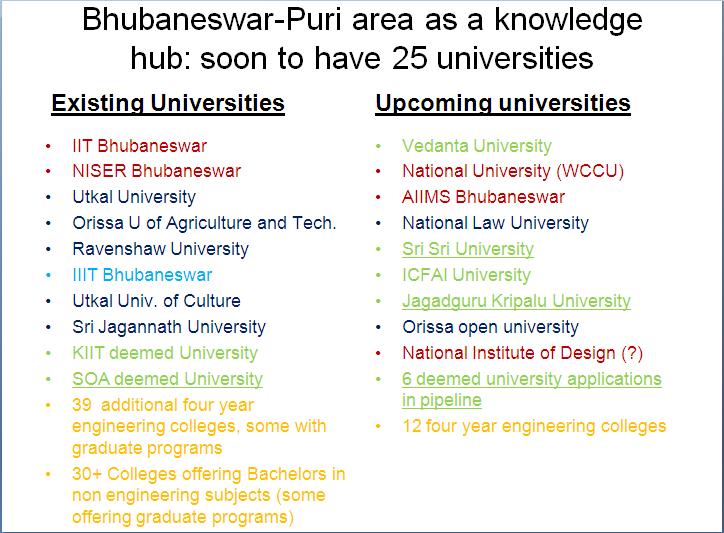Following is an excerpt from a report in e-pao.net.
New Delhi, November 11 2008:
STATE CHIEF Minister Okram Ibobi along with the Education Minister L Jayantakumar and the Tribal Development Minister DD Thaisii met Prime Minister Dr Manmohan Singh at the Prime Minister’s Office here this afternoon in connection with the reservation policy for recruitment of scheduled tribes in Manipur University and opening of a regional centre of the Indira Gandhi National Tribal University in Manipur.
During the half an hour meeting, Chief Minister Ibobi told the Prime Minister that the Manipur University, which was a State University , became a Central University in the year 2005.The All Tribal Students’ Union of Manipur (ATSUM) and Manipur University Tribal Students’ Union (MUTSU) had been requesting the Central Government as well as the State Government seeking adoption of the State Government’s reservation policy in matters of recruitment in the Manipur University.
The Chief Minister further stated that based on the population composition of Manipur, the reservation policy of the State Government stipulated 31 pc reservation for Scheduled Tribes and 2 pc for the Scheduled Castes, as against 7.5 pc for Scheduled Tribes and 15 pc for Scheduled Castes in the Central Reservation Policy.
As such, the State Government had recommended to the Central Government the adoption of the State Reservation Policy by the Manipur University as a special dispensation keeping in view of the ethnic composition of Manipur.
O Ibobi also referred to the establishment of the Indira Gandhi National Tribal University at Amarkantak in Madhya Pradesh by a Central Act namely the Indira Gandhi National Tribal University Act 2007.This Act empowered the University to make special provisions for the employment or admission of women, persons with disabilities or of persons belonging to the weaker sections of the society and, in particular, of the Scheduled Castes and scheduled Tribes.
The Chief Minister further expressed that Manipur had nine districts; out of which five districts were predominantly inhabited by the tribal communities.
The facilities for imparting education in hill districts were inadequate.
It would help a great deal in promoting education among the tribal communities of the State, if a Regional Centre of the Indira Gandhi National Tribal University had been established in one of the hill districts of Manipur.
He demanded for setting up a Centre of the Indira Gandhi National Tribal University in one of the hill districts of Manipur.
After patient hearing, the Prime Minister Dr Manmohan Singh expressed that the rectification of the Central Reservation Policy required an amendment of the policy and it would take time.
But the Centre would see the possible way to rectify it.
In regards to the opening of a Regional Centre of the Indira Gandhi National Tribal University in Manipur, the Prime Minister nodded enthusiastically at the proposal.
He advised the Union Secretary of Higher Education Shri Rameshwar Pal Agrawal who was also in the meeting asked to sit with the Ministers from Manipur tomorrow at 4 pm for working out the modality for opening of the Centre in Manipur.
Tomorrow, the Manipur Education minister Shri L.Jayantakumar Singh and the Tribal Development Minister Shri D.D.Thaisii will sit with the Union Secretary (Higher Education) Shri R.P.Agrawal at Shastri Bhavan here to chalk out the modality for opening of the Regional Centre of the Indira Gandhi National Tribal University in one of the hill districts of Manipur.
Following is an excerpt from the report in e-pao.net on the follow-up meeting.
November 13 2008: STATE CHIEF Minister Okram Ibobi and the Education Minister L Jayantakumar on Wednesday met the Union Minister for Human Resources Development Arjun Singh at Shastri Bhawan here to relay the assurance of the Prime Minister of India Dr Manmohan Singh made on the previous day for opening of the Manipur campus of the Indira Gandhi National Tribal University.
The meeting lasted for about 10 minutes.
In the afternoon at 4 pm on Wednesday at Shastri Bhawan here; the Manipur Education Minister L Jayantakumar, Tribal Development Minister DD Thaisii and students leaders had an hour long discussion with the Union Secretary (Higher Education) RP Agrawal assisted by two Joint Secretaries for formulation of the proposed Manipur campus of the Indira Gandhi National Tribal University, Amarkantak in Madhya Pradesh.
The Union Secretary (Higher Education) informed the Manipur Ministers that the matter regarding the opening of a Regional Centre of the University in Manipur had been communicated to the Vice Chancellor of the University.
An expert group consisting of the representatives of Jawaharlal Nehru University, Delhi and Indian Institute of Technology, Delhi had been formed for preparation of Detailed Project Reports of the proposed Centre in Manipur.
RP Agrawal also communicated to them for sending a high level team comprising of representatives from the Ministry of Human Resource Development and the Indira Gandhi National Tribal University to Manipur very soon to see the suitable location of the Centre.
The Secretary asked the Manipur representatives to find out a suitable location of the area of 500 to 700 acres.
He informed them that the appointment of faculty staff of the Centre would be done on the basis of the all-India norm and as for the admission of the students; it would be based on the ethnic composition of the State.
… The Manipur Tribal Development Minister DD Thaisii said here today that the opening of the regional centre of the Indira Gandhi National Tribal University would have a good opportunity not only for the tribal people of the region but also for the general people in learning different subjects in the University.
The Minister further stated that the proposed regional centre in Manipur would be the first campus of the University.
The Union Secretary told them that the Ministry received many proposals from different States for opening of the branches of the University in their respective States, he added.
Why is not Orissa proposing one such regional center in one of its tribal districts? At the current moment Kandhamala would be an easy sell.
November 14th, 2008
I have been watching and collecting various reports on Vedanta University since an MOU was signed about it with the Orissa government. (See my collection here and here and also Vedanta University’s web page.)
After reading about the forced stoppage of the initiation of the building of Vedanta University, I thought I would write about my perspective on Vedanta University.
May I request you to bear with me on my thoughts on Vedanta University and read till the end of this document, even if you partly or fully disagree with me.
I think Vedanta University is a unique opportunity for Orissa and if we mess it up we will regret for ever and our future generation will not forgive us for this.
Why do I say that?
First I would urge you to watch the following two short videos and an audio interview available in the web:
I know many of you have a lot of concerns and red flags about this endeavor and some of these concerns have been expressed in various Orissa newspapers. Let me try to address some of them based on my knowledge.
Q 1: If many top universities are built on much less land, such as Harvard University, which is built only on 380 acres, why does Vedanta University need so much land. (It has now come down from 8000 acres to 6270 acres, but that is still quite large. 6270 acres is 25.374 sq km)
Answer 1: Let us look at the layout below.

The whole thing is 8000 acres. With the airport part gone it is 6270 acres. The ellipse like main university (see picture below) part looks to be about 2000 acres and comparable to the size of IIT Kharagpur which is of 2100 acres but has only 6625 students . Note that IIT Bhubaneswar is being given 890 acres. So Vedanta University’s 2000 acres for 100,000 students is a very good use of land. Please watch the youtube video at http://www.youtube.com/watch?v=u3B7L1S_MAY&fmt8 to get an idea how the buildings are proposed to be quite close to each other with very creative landscaping.
Note that Harvard University with 380 acres supports 19,955 students. So Vedanta University proposing 5 times Harvard’s land for 5 times Harvard’s acreage is not unreasonable.

Q 2: So if the main part of the Vedanta university is only about 2000 acres, what happens to the remaining 6270-2000= 4270 acres.
Answer 2: As is evident from the picture in the previous page there are 8 townships planned for those.
Q 3: If only 2000 acres goes to the university and 4270 acres goes to the townships, why not just focus on the university and ignore the township?
Answer 3: The townships are very important for making Vedanta University a top university at the level of Stanford and Harvard. Following is the reasoning behind it.
its income and expenses are as follows:
Income (2006-07): 3.21 Billion USD
Expenses (2006-07): 3.17 Billion USD
Total Endowment (June 30, 2007): 34.912 Billion USD
From Stanford University annual report at
http://www.stanford.edu/dept/businessaffairs/cgi-bin/downloadpdf_v3.php?file=AnnualReport_2007.pdf
its income and expenses for 2006-07 are as follows.
Income (2006-07): 3.2 Billion
Expenses (2006-07): 2.9 Billion USD
Total endowment (Aug 31, 2007): 17.2 Billion USD
In India the operating expenses for IISc Bangalore, the maximum among the IITs and IISc, in the last budget (item 41 of the Higher education budget) is 130 (plan) + 91 (non-plan) = Rs 221 crores. Rs 70 crore of that is for enhancing the number of students to account for the OBC quota.
For operating Vedanta University at the world class level a lot of money will be required. My guess would be that it will be somewhere in between the expenses at Harvard-Stanford ($2.9-$3.17 Billion = about Rs 15,000 crores) and at IISc Bangalore (221 crores). A good guess is that it will be around Rs 1000-1500 crores.
Mr. Agarwal has only pledged 1 Billion USD and most of it will go into just construction. The student tuition fees will not be enough to cover the Rs 1000-1500 crores needed to run the university.
In case of Harvard only 20% comes from student tuition and the student tuition mostly ranges from 30,000 USD/year to 40,000 USD/year. (This is Rs. 15 lakh/year – Rs. 20 lakh/year)
Vedanta University will not be able to charge that outside of medical students.
So there has to be other sources of money beyond the student tuition.
Since Vedanta University does not have an endowment, where will the additional money come from?
My guess is that it will come from the townships in the remaining 4270 acres.
Thus, I consider the townships to be crucial in achieving the dream of making Vedanta University a top world class university. (However we need to make sure that the money earned from the townships is put into an endowment for Vedanta University.)
If there was no township, I would be very suspicious of Vedanta University’s claim that it will be a top world class university, as then it is not clear where the money would come from. (In this regard one must note that the best private institute in India, BITS Pilani, is nowhere in the world rankings. For that matter the IITs are quite low in the world rankings. What Vedanta University is aspiring is way above any existing institute in India and the existing financial model in private institutes such as BITS Pilani will not achieve what Vedanta University is aiming for.)
Q 4: So you are saying township is a crucial aspect of Vedanta University and 4270 acres goes towards that and only 2000 acres goes towards Vedanta University. Why do not then the Vedanta University officials make the township part clear?
Answer 4: They have.
If one goes to their web page they clearly say: "The campus will be developed in a phased manner to nurture a vibrant university township with a population of more than 500,000."
Q 5: Is there a top university which is similar to Vedanta University + associated townships in terms of land requirements.
Q 6: Is Vedanta University’s goal of 100,000 students reasonable.
Answer 6: Following are some large universities in the USA and their student size in Autumn 2007 as obtained from http://www.osu.edu/osutoday/stuinfo.php#enroll_large .
|
|
Student size
|
Times rank
|
SJT Rank
|
|
The Ohio State University
|
52,568
|
121
|
62
|
|
Arizona State University, Main Campus
|
51,481
|
260
|
93
|
|
University of Minnesota, Twin Cities
|
50,833
|
87
|
28
|
|
University of Florida
|
50,576
|
165
|
58
|
|
University of Texas, Austin
|
50,201
|
70
|
39
|
|
Texas A&M University, College Station
|
46,542
|
137
|
88
|
|
Michigan State University
|
46,045
|
203
|
83
|
|
Penn State University
|
43,232
|
105
|
42
|
|
University of Wisconsin, Madison
|
42,041
|
55
|
17
|
|
University of Illinois, Urbana
|
41,135
|
71
|
26
|
They are all pretty good universities, all of them ranked in the top 100 in the SJT ranking.
Q 7: How do we know that the University is not a ruse and Mr. Agarwal just wants the land?
Answer 7: Mr. Agarwal’s net worth in early 2008 was $6 Billion.(see http://www.forbes.com/lists/2008/10/billionaires08_Anil-Agarwal_WDNS.html )
His net worth in 2006 was $2.8 Billion. (see http://www.forbes.com/lists/2006/10/WDNS.html )
Now what is the most important asset of a rich man? His reputation in the eye of the world.
Mr. Agarwal has told the whole world about his university.
Articles praising his pledge to donate $1 Billion towards Vedanta University have appeared in major national and international venues such as:
Time, USA – http://www.time.com/time/specials/2007/time100powergivers/article/0,28804,1616375_1615711_1615671,00.html
Economist – http://www.economist.com/people/displaystory.cfm?story_id=9539815
Independent, UK – http://news.independent.co.uk/education/higher/article3045374.ece
Forbes, USA – http://www.forbes.com/lists/2008/10/billionaires08_Anil-Agarwal_WDNS.html
Forbes Asia – http://www.forbes.com/lists/2008/56/biz_philanthropy08_Anil- Agarwal_WDNS.html
PBS TV USA – http://www.charlierose.com/guests/anil-agarwal
He has met the Prime Minister of India and told him about his pledge to donate $1 Billion for the university.
I do not believe that after so much publicity Mr. Agarwal will back out, as he will lose face and that is the most important thing for a person of his net worth. (It should be noted that many billionaires, especially in the US, do make huge donations. Bill Gates donation of tens of billions USD and Warren Buffet’s donation of about $30 Billion are exemplars. In higher education, Leland Stanford established Stanford University and Andrew Carnegie established Carnegie Mellon University; both top universities now. )
However, if the current opposition continues, it is very much possible that at some point Mr. Agarwal may get fed up with the hurdles created by some people of Orissa and will move Vedanta University to a state (such as Gujarat, Andhra or Karnataka) where he will be welcomed.
Q 8: How come Gujarat, Andhra and Karnataka did not woo him earlier.
Answer 8: I do not know why. May be at that time they did not take him seriously and Orissa did. But now after the design of the university and lot of other groundwork has been done, they will woo him like anything.
In my opinion, Orissa lucked out that it signed the MOU in 2006. It also helped that Mr. Agarwal has other business in Orissa. But then many other companies, private and public have business in Orissa. How much have they given to Orissa in comparison? A good example is 12 crores by Tata Steel for the Inst. of Math and application, and few other smaller donations. Compare that to $1 Billion which is now Rs 5000 crores.
Going back to Gujarat, Andhra and Karnataka, we know what Gujarat did with respect to Nano. If given a small opening they will do the same with respect to Vedanta University.
Andhra Pradesh is in the process of developing Odyssey Science city with an area of 65,000 acres. The first phase is of 10,000 acres. Few months back Andhra CM signed a deal whereby APIC will acquire the land.(See http://www.hindu.com/2008/01/09/stories/2008010958760800.htm ) Given a chance Andhra Pradesh will pick up Vedanta University in a heartbeat. I am told that they already contacted Vedanta officials regarding that.
IT people have a responsibility that they are yet to fulfil. If they’re making so much money, why shouldn’t they create an outstanding private university equivalent to Stanford or Harvard? Had they done something like that they would have compensated for the other problems they have created. If IT people are making money, what do I get out of it, unless I am employed in Infosys with Narayana Murthy? The trouble is, we have given them a lot, but have got nothing in return.
Q 9: How does Vedanta University help Orissa and India?
Answer 9: Let consider the world ranking of universities.
In the Times ranking at http://www.topuniversities.com/ the top ranked universities in the world and the top ranked universities in India and China are as follows:
1. Harvard, USA
2. Yale, USA
3. Cambridge, UK
4. Oxford, UK
154. IIT Delhi
174. IIT Bombay
274. Delhi University
303. IIT Madras
50. Peking University, China
56. Tsinghua University, China
113. Fudan University, China
141. Univ of Sc. & Tech, China
143. Nanjing University, China
144. Shanghai Jiao Tong Univ, China
In the SJT ranking at http://www.arwu.org/rank2008/Top500_EN(by%20rank).pdf the top ranked universities and the top ranked universities in India and China are as follows:
1. Harvard
2. Stanford
3. Berkeley
4. Cambridge
5. MIT
303-401 IISc Bangalore, IIT Kharagpur
201-302 Nanjing University, Peking University, Shanghai Jiao Tong Univ, Tsinghua University, Univ of Sc. & Tech, Zhejiang University
As the above shows, Indian Universities including IITs and IISc are way behind the top universities of the world. They are even much behind the top universities in China.
So what Vedanta is aspiring is to be a university ranked in the top 50 of these lists, if not in the top 25. If that is achieved it will have a huge impact on India, and not just Orissa.
There will be also a lot of impact on Orissa.
a. It will pull up the institutions near Vedanta University such as IIT Bhubaneswar, NISER
Bhubaneswar, the proposed world class central university (WCCU) in Bhubaneswar, IIIT Bhubaneswar, and even Utkal, Ravenshaw, OUAT, etc. The reason it will pull up the other universities is that many otherwise great professors, who will miss out getting a job at Vedanta, would like to be nearby Vedanta and thus would take a position in one of the above universities in the area. The reason they would like to be near Vedanta is that being nearby will allow them to collaborate with the faculty at Vedanta. For the same reason, many of the Ph.Ds coming out of Vedanta Universities would prefer to stay in the area universities.
Note that without Vedanta, IIT Bhubaneswar may end up among the bottom IITs, NISER Bhubaneswar may end up among the bottom IISER/NISERs and the WCCU Bhubaneswar may end up among the bottom WCCUs. This is evident from the admission numbers of IIT Bhubaneswar this year. In terms of student preferences it was only better than IIT Patna. See https://www.orissalinks.com/archives/1303 . This will not improve easily.
Moreover the existing IITs and central universities have been there for years and are established in terms of their infrastructure and they also get a lot of support (including cash donations) from their alumni. The new institutions in Bhubaneswar (IIT, NISER, WCCU) will normally take multiple decades to get to that level.
But with Vedanta University nearby, the situation would change; IIT Bhubaneswar could become among the top IITs; Same about NISER Bhubaneswar and WCCU Bhubaneswar. In other words, the establishment of Vedanta University has the possibility of turning the Puri-Bhuaneswar-Cuttack area a bigger knowledge hub than Pune and Bangalore.
b. With a top IIT, NISER and WCCU near Vedanta, the whole area from Cuttack-Puri will become a huge knowledge hub. Orissa will be able to go much beyond attracting WIPRO, TCS, Infosys, Satyam to attracting companies like Google, IBM, Microsoft etc. Currently such companies come mostly to Bangalore.
c. Recently Mr. Agarwal said that (see https://www.orissalinks.com/archives/1105 ) they will work towards giving 25% seats to the students from Orissa who will be taken on merit basis. This means besides Vedanta University, they will invest in schools so that the above happens. They already have started in that direction by enrolling children of the area in DAV schools and funding their educational cost.
d. Vedanta University is starting off with a hospital and medical college. This will definitely benefit the locals.
e. Another way to look at Vedanta University’s impact is as follows.
It has been said that 3 Billion USD will be spent in making Vedanta University out of which one Billion USD will given by Mr. Agarwal. One Billion USD is Rs. 5000 crores. Recently the central government has announced IITs, IISERs, world class central universities, etc. and the budget for making each of them has been announced. See http://pib.nic.in/release/release.asp?relid=37684 . The budget of a new IIT is 760 crores, new IISER is 500 crores, AIIMS is 332 crores, IIM is 210 crores, and world class central university is 720 crores. They add up to 2522 crores. In other words, with 5000 crores one can almost make 2 new IITs, 2 new IISERs, 2 new AIIMS, 2 new IIMs and 2 new world class central universities. And that is what Orissa will lose out if it throws out Vedanta University.
Q 10. I am opposed to Vedanta’s mining activities. How can I support Vedanta University?
Answer 10: Even if one is opposed to Vedanta’s mining activities, he/she should not oppose having Vedanta University in Orissa as opposing Vedanta University for not liking its mining operation is like "cutting of the nose to spite the face."
Q 11. The MOU was signed in 2006. What has happened since then to indicate that Vedanta University is serious?
Answer 11: I do not know all that has happened, but let me elaborate on the design and architectural front. (In addition they have made progress in land acquisition, hired people in implementing R & R, hired architects and engineers etc.)
They have hired a top architecture company in the USA who has a track record of participating and shaping almost all major universities in the USA. The company is Ayers Saint Gross. Its web site is http://www.asg-architects.com/ . Following are some links to their web pages which refers to Vedanta University.
The design of the master plan of Vedanta University has been featured in many US architecture venues and it has also won some awards. Following are some links on that.
Some pictures of the designs are at http://chronicle.com/media/flash/v53/i45/vedanta/ and videos are at :
Besides the above architecture company, the other companies that Vedanta has hired include:
Most recently, they were ready to start construction but were turned away by about 500 people.
So that is part of their current status.
In summary, Vedanta University has the potential to turn the area from Cuttack-Puri into a bigger knowledge center than Bangalore and Pune and perhaps into the biggest knowledge center (with associate knowledge companies such as Google research, Microsoft Research, IBM research etc.) in India. As a result, it can completely change Orissa. (Imagine the impact if Bangalore was in Orissa.)
We should not play politics with it; otherwise like Tata Motors moving from Singur to Gujarat, Vedanta University will move to another state and for centuries our descendants will blame us for missing an opportunity that may come once in many centuries.
November 8th, 2008







